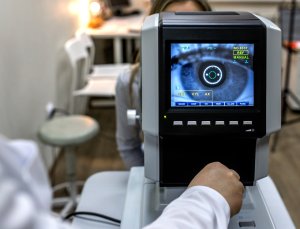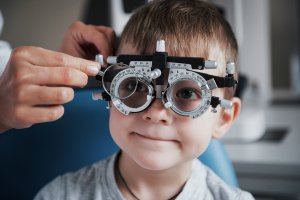What are the Early Symptoms of Cataracts?

Voted Best of Berks—
eight years in a row!
Cataracts are a common age-related condition in which the eye’s natural lens becomes cloudy, gradually reducing visual clarity. While cataracts often develop slowly, recognizing the early signs can help you seek treatment before your vision is significantly affected. At Eye Consultants of Pennsylvania, our fellowship-trained cataract specialists are here to help patients understand, monitor, and treat cataracts at every stage. Here’s what to watch for:
- Blurry or Cloudy Vision
One of the earliest and most noticeable signs of cataracts is blurred or hazy vision. It may feel like you’re looking through a fogged-up window or a smudged pair of glasses. This blurriness tends to affect both near and distance vision and may worsen over time.
- Glare and Halos Around Lights
Many people with early-stage cataracts notice increased sensitivity to light and glare, particularly when driving at night. Headlights and streetlamps may appear to have halos or starbursts around them, making nighttime driving more difficult or uncomfortable.
- Difficulty Seeing in Low Light
As cataracts progress, it can become harder to see clearly in dim or low-light settings. You might notice that you need brighter light to read, cook, or complete other daily tasks that didn’t require extra lighting before.
- Colors Appear Faded or Yellowed
Cataracts can affect color perception, making colors appear less vibrant. Whites may take on a yellow or brownish tint, and you may not notice the gradual change until someone else points it out or you compare objects under bright light.
- Frequent Changes in Eyeglass or Contact Lens Prescription
If you find yourself needing new glasses or contact lens prescriptions more often than usual, cataracts could be the reason. As the lens continues to change and cloud, your vision will fluctuate, often prompting more frequent visits to the eye doctor.
- Double Vision in One Eye
Some people with cataracts report double vision (also called diplopia) in a single eye. Unlike double vision caused by neurological or muscle issues, this symptom in cataract patients is due to light scattering irregularly within the cloudy lens.
- Trouble with Contrast and Visual Sharpness
Cataracts can reduce contrast sensitivity, making it difficult to distinguish objects from similarly colored backgrounds. This becomes particularly noticeable when reading fine print or driving in poor weather conditions.
Who Is at Risk?
While cataracts are most common in adults over the age of 60, they can begin developing earlier, especially in people with certain risk factors, such as:
- A family history of cataracts
- Diabetes or other systemic conditions
- Prolonged sun exposure without UV protection
- Smoking or heavy alcohol use
- Prior eye injury or surgery
- Long-term use of corticosteroids
The Good News
Cataracts are highly treatable. Cataract surgery is a safe, fast, and effective outpatient procedure that is performed millions of times each year with excellent results. Early diagnosis is key. A routine dilated eye exam can detect cataracts even before symptoms become noticeable. Catching them early allows your eye doctor to monitor progression and discuss the right time for treatment.
If blurry or dim vision is disrupting your daily life, surgery can restore clarity and significantly improve your quality of life. At Eye Consultants of Pennsylvania, you’ll receive expert care from fellowship-trained cataract surgeons who prioritize precision, comfort, and results. Our approach includes:
- Minimally invasive techniques with quick recovery
- Personalized intraocular lens (IOL) options
- Honest financial guidance and insurance support
If you’re ready to see more clearly, find an Eye Consultants of Pennsylvania location near you or request an appointment online to schedule your cataract evaluation today.
Find a Doctor
Physician information including education, training, practice location and more.
Schedule an Appointment
Call 800-762-7132 or make an appointment online.





